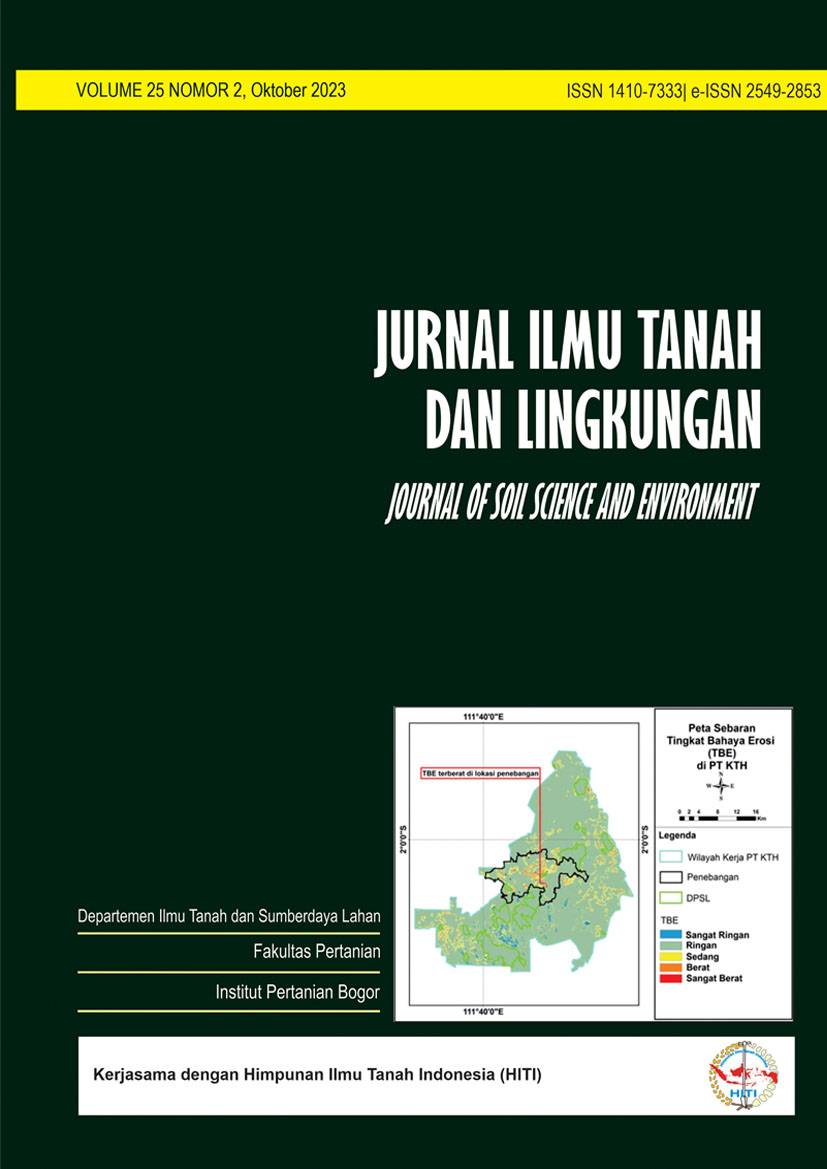Suitability of Mangrove Tourism in the Kacepi Mangrove Ecotourism Park, Kacepi Village
Abstract
Utilization of mangrove ecosystems for ecotourism is in line with the shift from old tourism tourists, namely tourists who come with the sole purpose of traveling, to new tourism, namely tourists who come not only for tourism purposes but also for education and conservation. The Kacepi Mangrove Ecotourism Park aims to increase the economic income of the surrounding community as a tourist attraction manager, which opened for the first time in 2019. The purpose of this research was to determine the number of mangrove species, the density of mangrove species, the percentage of mangrove density and the tourism value index of mangroves in the Kacepi mangrove ecotourism park, Kacepi Village. The method used in this research is the line transect method to measure density and observe mangrove species, the Hemispherical Photography method to calculate the percentage of mangrove canopy cover and the weighting/scoring method to determine the tourist suitability index value. The results of this research show that the proportion of canopy cover is 73%, the number of observed mangrove species is 5, the density of mangroves in Kacepi Mangrove Ecotourism Park is 17 trees/100m2, the low tide is 1,9 m, and the thickness of the mangrove is 183,45 m. Overall, the suitability of mangrove tourism in TEMK is 3.22 which shows the suitability of mangrove tourism in TEMK is quite suitable
Downloads
References
Agussalim, A., & Hartoni. (2014). Potensi Kesesuaian Mangrove sebagai Daerag Ekowisata di Pesisir Muara Sungai Musi Kabupaten Banyuasin. Maspari, 6, 148 - 156.
Agustini, N. T., Ta'alidin, Z., & Purnama, D. (2016, April). Struktur Komunitas Mangrove di Desa Kahyapu. Enggano, 1, 19 - 31.
Bacmid, K. N., Schaduw, J. N., Warouw, V., Darwisito, S., Kaligis, E. Y., & Wantasen, A. (2019). Kajian Kesesuaian Lahan Ekowisata Mangrove Dimensi Ekologi (kasus pada pulau bunaken bagian timur, kelurahan alung). Pesisir dan laut tropis, 129 - 141.
Dharmawan, I. E., & Pramudji. (2014). Panduan Monitoring Status Ekosistem Mangrove. Jakarta: Pusat Penelitian Oseanografi Lembaga ilmu Pengetahuan Indonesia.
Harahab, N. (2010). Penilaian Ekonomi Ekosistem Hutan Mangrove dan Aplikasinya dalam Perencanaan Wilayah Pesisir (1 ed.). Yogyakarta, D.I. Yogyakarta, Indonesia: Graha Ilmu.
Kementerian Lingkungan Hidup dan Kehutanan Republik Indonesia. (2021, Oktober 13). www.ppid.menlhk.go.id/berita/siaran-pers/6225/peta-mangrove-nasional-tahun-2021-baseline-pengelolaan-rehabilitasi-mangrove-nasional. Retrieved from www.ppid.menlhk.go.id: http://ppid.menlhk.go.id/berita/siaran-pers/6225/peta-mangrove-nasional-tahun-2021-baseline-pengelolaan-rehabilitasi-mangrove-nasional
Kepala Desa Kacepi. (2022, Desember 28). Apa yang menjadi dorongan bapak untuk membuka TEMK. (Z. Syaifuddin, Interviewer)
Kuncahyo, I., Pribadi, R., & Pratikto, I. (2020). Komposisi dan Tutupan Kanopi Vegetasi Mangrove di Perairan Bakauheni, Kabupaten Lampung Selatan. Journal of Marine Research, 444 - 452. doi:10.14710/jmr.v914.27915
Latupapua, Y. T., Loppies, R., & Fara, F. D. (2019). Analisis Kesesuaian Kawasan Mangrove sebagai objek Daya Tarik Ekowisata di Desa Siahoni, Kabupaten Buru Utara Timur Provinsi Maluku. Jurnal Sylva Lestari, 267 - 276.
Noor, Y. R., Khazali, M., & Suryadiputra, I. N. (2006). Panduan Pengenalan Mangrove di Indonesia. Bogor: Ditjen.PHKA & Wetland International Indonesia Programme.
Pasang Laut. (2023, Januari 1). pasanglaut.com. Retrieved from https://pasanglaut.com/id/maluku-utara/umera#_tide_table: https://pasanglaut.com/id/maluku-utara/umera#_tide_table
Purmada, D. K., Wilopo, & Hakim, L. (2016). Pengelolaan Desa Wisata Dalam Perspektif Community Based Toursim (Studi Kasus pada Desa Wisata Gubugklakah, Kecamatan Poncokusumo, Kabupaten Malang). Jurnal Administrasi Bisnis, 15 - 22.
Purnama, M., Pribadi, R., & Soenardjo, N. (2020). Analisa Tutupan Kanopi Mangrove dengan Metode Hemispherical Photography di Desa Betahwalang, Kabupaten Demak. Journal of Marine Research, 317-325. doi:10.14710/jmr.v913.27577
UNESCO Office in Jakarta. (2009). Ekowisata : Panduan Dasar Pelaksanaan. Jakarta: UNESCO.
Usman, A., & Duwila, D. (2022, Februari). Analisis Ekonomi Potensi Kawasan Hutan Mangrove di Desa Kipai Kecamatan Patani. Ilmu Pendidikan, Sains dan Humaniora, 1(2), 52 - 62.
Wetlands International Indonesia. (2023, Maret 15). http://www.wetlands.or.id/mangrove/mangrove_species.php?id=37. Retrieved from www.wetlands.or.id: http://www.wetlands.or.id/mangrove/mangrove_species.php?id=37
Copyright (c) 2023 Jurnal Ilmu Tanah dan Lingkungan

This work is licensed under a Creative Commons Attribution-ShareAlike 4.0 International License.
Department of Soil Science and Land Resources Departemen Ilmu Tanah dan Sumberdaya Lahan, Faculty of Agriculture Fakultas Pertanian, IPB University



















